By physical networking I mean going to conventions, having your portfolio reviewed, office visits, going to lectures, sketch nights, gallery openings, really any events, including just hanging out and socializing informally with peers. By virtual networking I’m talking about emailing and social media—mostly facebook and twitter because those have the most interaction.
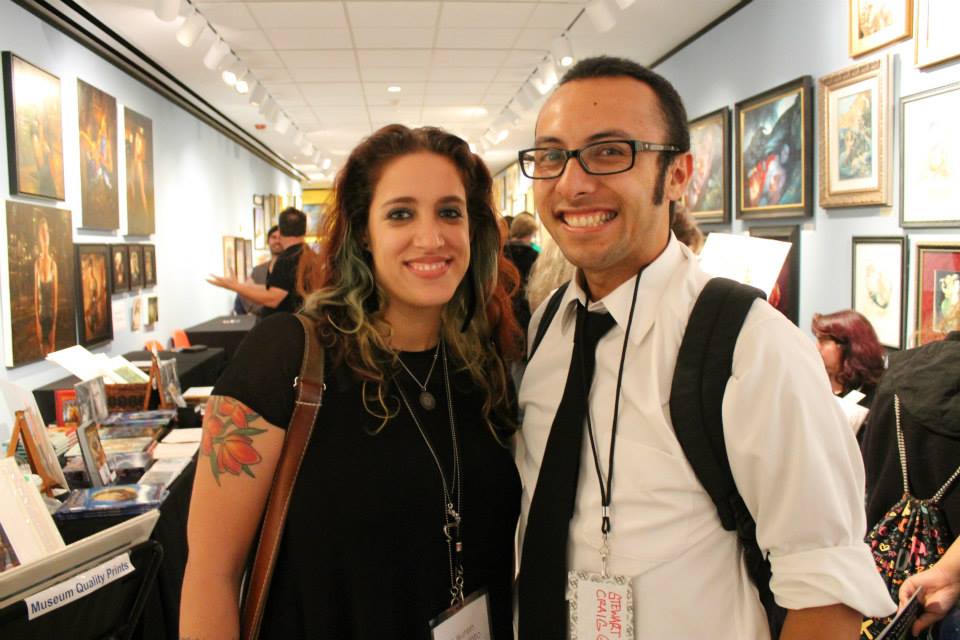 |
| Art Directors don’t bite, I promise! Stewart Craig escaped unscathed. |
This is going to come as a surprise to no one: In today’s world you must put time and effort into virtual networking. You must make your work available online, even if it’s via the most basic website. You have to target clients and Art Directors by email and keep them updated every so often of your new work and your website. I’ll even go out on a limb and say you must be on facebook, even if just an artist fan page rather than a personal account. I think you can take or leave twitter as an artist, since it’s not a visual medium, but there’s an interaction style on twitter that is really different from facebook and works well for some people. You all know by now that I love instagram and pinterest, but we’ll consider them bonus activity for this post, along with Behance, DeviantArt, CGHub and all the art-specific networking sites. You don’t have to be everywhere, but pick sites that mesh with how you work and the devices you use most, and then keep them updated. Third-party manager apps like ifttt.com are amazing, just remember the idea is to not make the auto-posting feel like a robot is running all your social media interaction.
Why is it so important to keep a steady presence online? Well, for one thing, most Art Directors spend a giant portion of their day online and on social media, keeping tabs on artists, keeping an eye on fresh talent, gossiping about artists (anyone who was just at Illuxcon will agree: ADs gossip like fishwives). Also, the art world is changing. There’s a world of artist-as-entrepreneur opportunities online to sell your art and personal projects directly to fans via sites like etsy, society6, kickstarter, etc. Building an audience of people who love your art just because they love it and have no business motives is a lovely self-confidence (and financial) cushion when that evil AD keeps not calling you for commissions. Look at artists like Tara McPherson, who was fabulous enough to come to Spectrum this year and talk about how to diversify your art career and audience. She sells prints and merch, does gallery work, and still takes commissions for bands, comics, book covers.
While online, just remember the rules from the Approaching Art Directors post: no tagging people in your artwork just so they look at it. No posting your work on ADs pages. No facebook-messenger-stalking or twitter-stalking. Just be as polite online as you would be in person and you’ll be fine.
Ok, now let’s go on to the harder of the two: Physical Networking. It’s more expensive, it’s more work, and it’s potentially very uncomfortable.
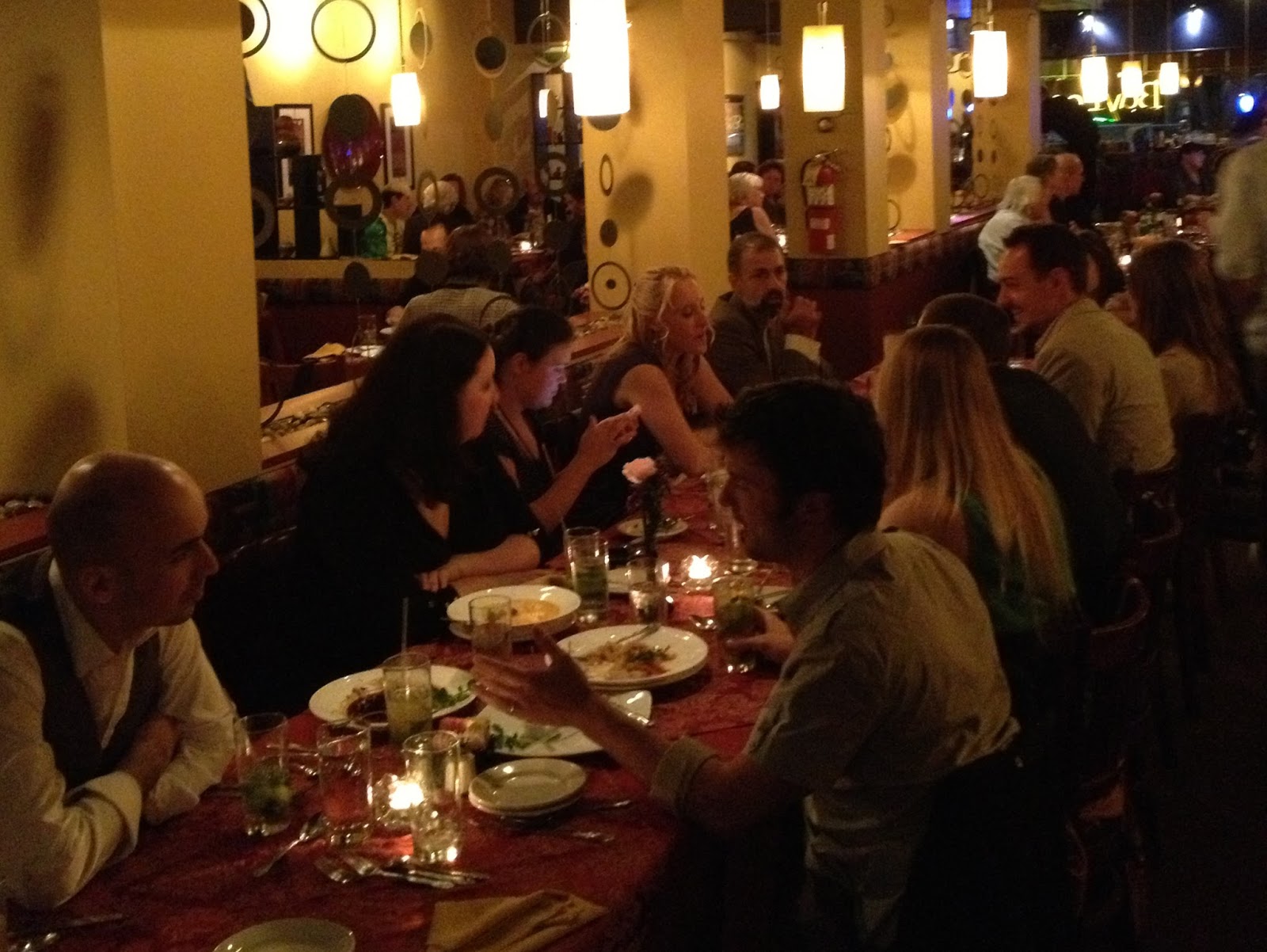 |
| There were so many artists and ADs in that one restaurant it was ridiculous. |
Artists ask me all the time, how important is living in NYC (publishing & editorial) or CA/WA (film & games)? Is it mandatory to go to cons? Do you have to meet Art Directors in person?
No, physical networking is not mandatory. I work with a lot of artists I’ve never met. I know a lot of artists who don’t go to cons and who live in remote places—thanks to hi-speed internet. And while I think it is critical that you establish a network of people who can give you honest critiques, yes, that can be a virtual network.
Relieved? Well, let me add this caveat: One hour of physical networking is worth 100 hours of virtual networking. I’m not exaggerating. In fact, I’m probably underestimating. I underlined it just so you know I’m serious. There is no real substitution for meeting someone and having a conversation with them. As a human being you take in so much subconscious information about a person when you meet them that it makes an impact you just can’t replicate virtually. Skype and Online classes come close but not close enough. Meeting someone is a giant leap towards trusting them and starting a relationship with them. And as an Art Director, you’re asked to put your job in someone else’s hands every time you hire an artist—the more trust you have for a person, the more you feel like you know them, the less risky that feels. Again, you can establish strong connections virtually, but it’s like walking while physical networking is driving a ferrari.
You know that world-famous artist you’ve admired since before you ever picked up a wacom pad? At a con you can walk right up and meet them and show them your work and get feedback. You know that Art Director who never answers the phone and doesn’t have time to answer every email from artists they don’t know? At a lot of industry events you can sign up for a portfolio review with them, and if you miss that you can walk right up to them and ask them to look at your work. (Just remember the no bathroom solicitation rule.*) At sketch nites and gallery openings and lectures you can meet other artists up, down, and at the same place on the career ladder as you are, and get an infinite amount of perspectives on your art and the business of art. These kinds of interactions only happen in person. There’s just no replicating them virtually. Late night ichat conversations and facebook posts just aren’t the same as being up until 4:30am debating art with other artists in a Holiday Inn lobby* or a dark bar somewhere.
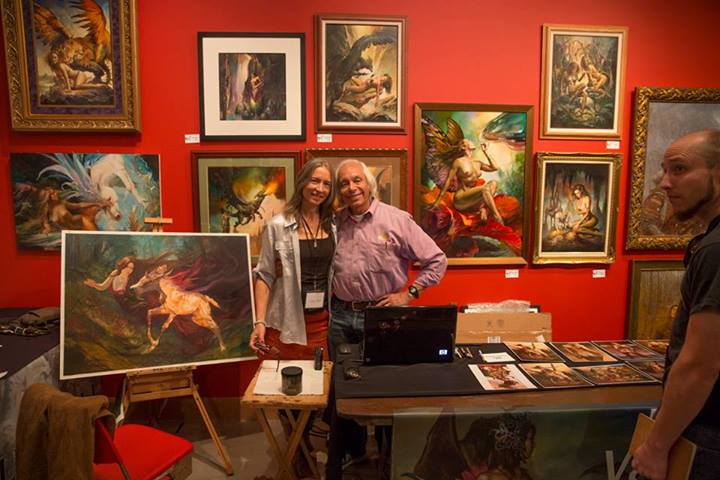 |
| Did someone say world-famous artists? |
So why do many artists find physical networking so hard? (Besides the fact that living in NYC as well and/or traveling to cons costs a lot of money, of course.)
There’s a pervasive stereotype that artists (especially SciFi/Fantasy artists) are weird introverts that do all their work at night, chain smoke cigarettes, and don’t venture into the light of day.* Now while there’s certainly the cases that prove the sterotype, in fact artists are some of the most social animals I’ve ever met. So let’s go back to the actual definitions of extravert and introvert. It’s not as simple as shy or not. These are terms created by Carl Jung and further codified after him by Myers & Briggs. If you look these personality types up on the Myers-Briggs chart you’ll find these profiles:
Extravert (outward-turning): “I like getting my energy from active involvement in events and
having a lot of different activities. I’m excited when I’m around
people and I like to energize other people. I like moving into
action and making things happen. I generally feel at home in the
world. I often understand a problem better when I can talk out
loud about it and hear what others have to say.”
Introvert (inward-turning): “I like getting my energy from dealing with the ideas, pictures,
memories, and reactions that are inside my head, in my inner world.
I often prefer doing things alone or with one or two people I
feel comfortable with. I take time to reflect so that I have a
clear idea of what I’ll be doing when I decide to act. Ideas are
almost solid things for me. Sometimes I like the idea of something
better than the real thing.”
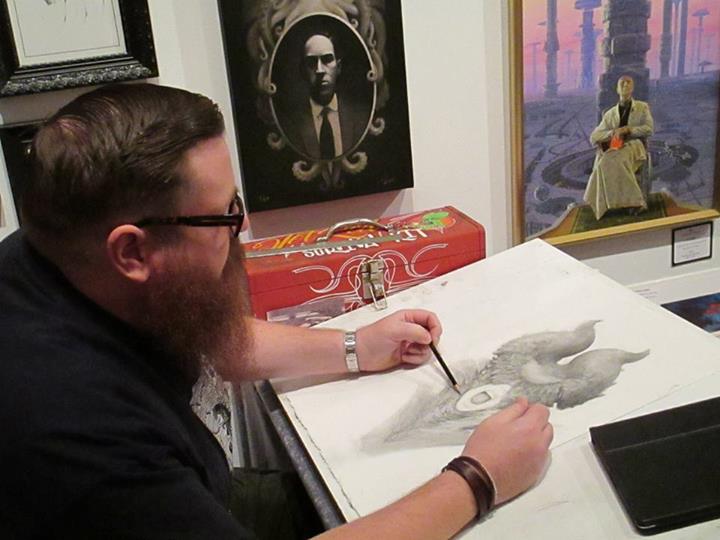 |
| You don’t even have to make conversation, you can just stand and watch an artist’s process, in this case Travis Lewis’s crazy pencil skills. |
We all have aspects of both in our personalities in different amounts, and that gives us a greater leaning towards one or the other. Think of it this way: You go to a con. You spend the entire day introducing yourself to strangers, showing your work to strangers, having random conversations with strangers. When you retire back to your hotel room (or bathtub*) that nite (or morning*), do you feel relieved that you have some time to yourself to recharge (introvert), or do you feel recharged by having had those interactions (extravert)?
I think most artists swing radically back and forth between extravert and introvert, I don’t think you can create without having introverted periods, but the truth of the matter is, it’s the extravert side that you really have to activate when it’s networking time. I definitely fall on the extravert side of the scale naturally, and that’s why you find me running around cons talking to everyone. I enjoy random conversations with people I don’t know so much that I subconsciously gravitate to wearing things (like Lord of the Rings leggings, or tentacle necklaces, for example) that are easy conversation-starters. I love networking. But I learned to love it. A lot of people find networking in person really stressful and awkward. You might be shy, you might be an introvert by nature, or you might just be a young artist just overwhelmed and nervous in the presence of a crowd of people more accomplished than you.
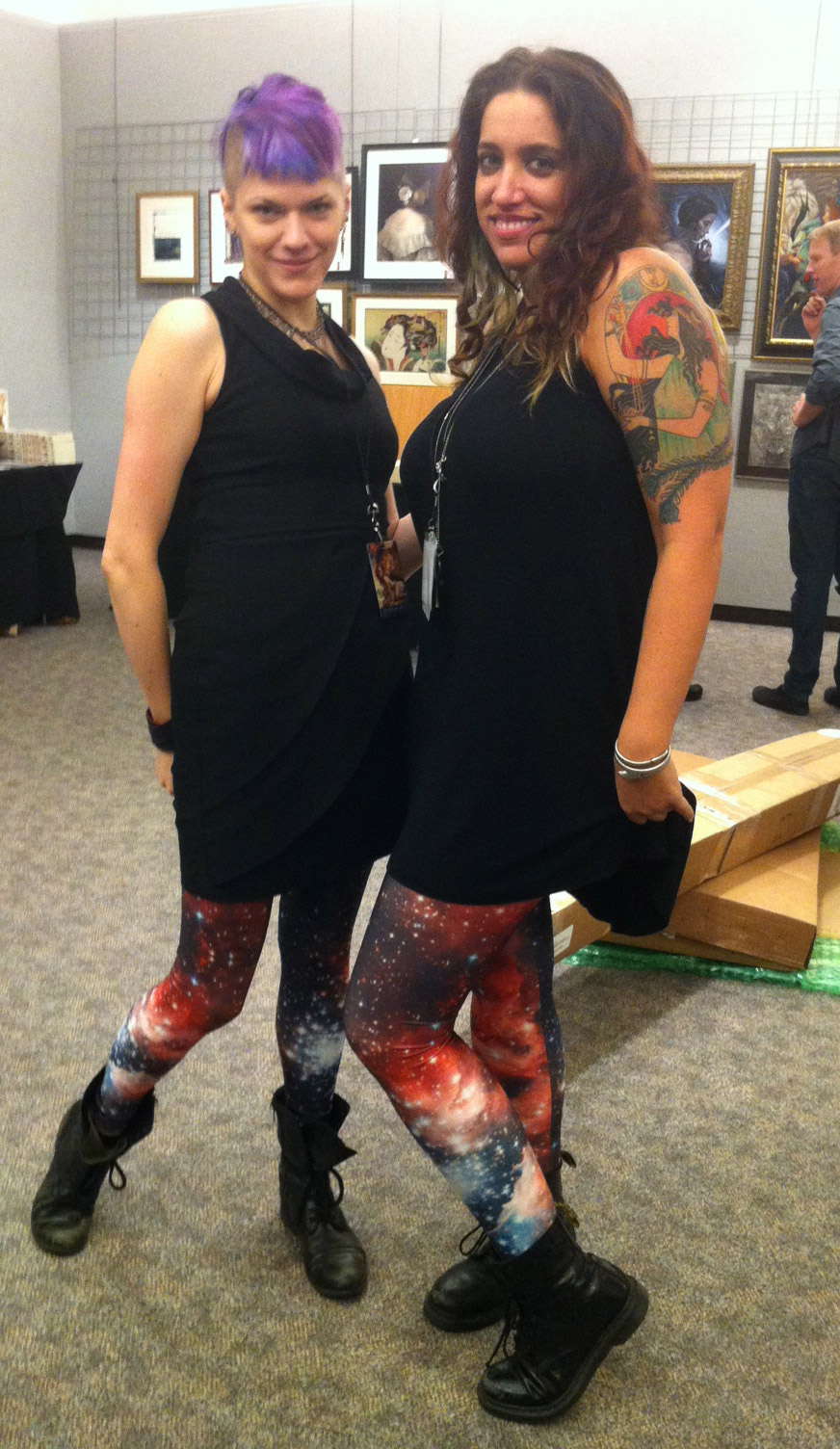 |
|
| Clearly introverted. |
I realize I’m at an advantage because I am naturally an extravert, and I’m also an Art Director now, which means people are more willing to overlook the times when I’m awkward and weird and consider it a job quirk, but I wasn’t always this confident in a crowd. Here’s some advice:
• Fake it till you make it. This is a public speaking trick that seems trite but actually helps a great deal. If you aren’t comfortable starting up random conversations with people, or walking up to an artist you admire and asking for advice, then spend a few moments before you enter the room visualizing a new character for yourself. You are confident, you have interesting things to contribute to conversations, you have no reason to be shy. (Bathroom breaks are great for self-coaching sessions.) Eventually you will automatically adopt this more confident persona in social settings without thinking about it.
• Practice opening lines. The hardest part of networking is starting a conversation with someone you have decided you want to talk to (Art Director, Famous Artist, Cute Girl, etc.) Once a conversation gets past the first 10 seconds it usually takes care of itself. Try to have a few lines ready for each of the type of people you want to talk to:
Art Director: “Excuse me, Lauren, I really love the books Orbit publishes and I would love to work with you. If you have some free time now or later would you be able to look at my work?”
Artist: “Hello, Boris, I’ve admired your work for a long time, and I was wondering if you minded telling me a bit about your technique for painting lighting effects.”
You’re on your own for the Cute Girls. This is an art blog, not a dating advice column, ha.
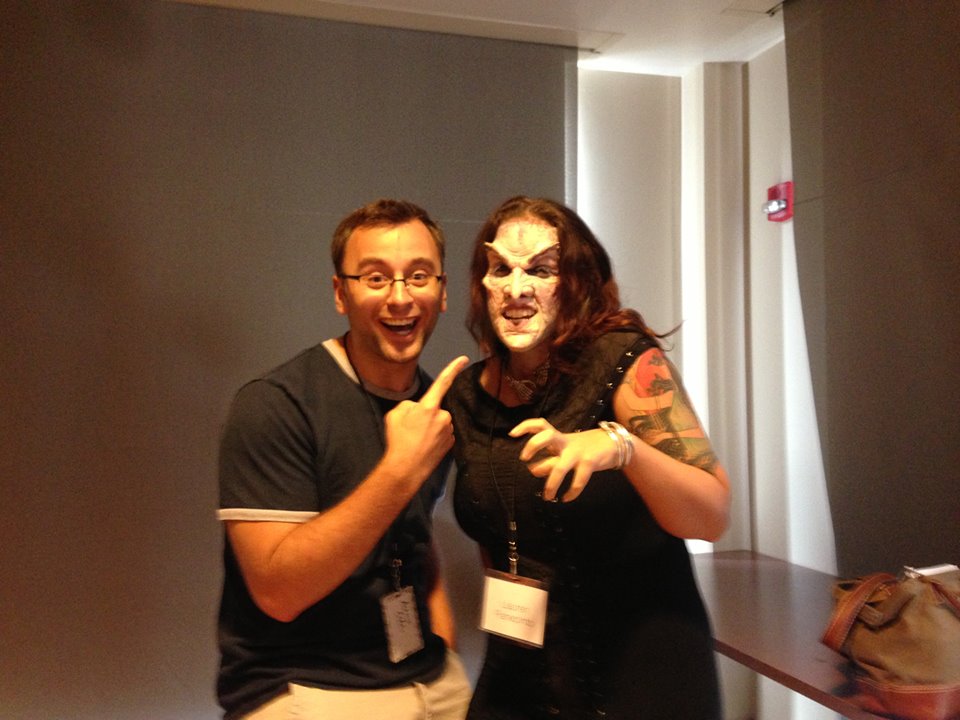 |
| Clearly my scary Art Director face didn’t faze Andrew Cefalu. (Makeup demo by J. Anthony Kosar.) |
• Power through the awkward.
Everyone is awkward sometimes. A joke falls flat, you freeze up, the
conversation dies…you feel the awkwardness level, and tension, and
stress ratchet up ten degrees. Just ignore it. Awkward moments happen. Push past it and either keep talking or make a joke or excuse yourself
politely and everyone else will be more than happy to ignore it because they were as much responsible for the awkward moment as you were. Do not retreat back to your hotel room to hide. Do not replay the awkward moment the whole way home on the train.
• People are judging you less than you think they are. Most people who are networking at a social event are so concerned with not looking like an idiot themselves they don’t have time to notice your hands are trembling and you’re sweating through your old spice.
• Networking events are the easiest places to network. Cons are big and crowded but people are there purposely for networking. That means ADs are expecting you to awkwardly break into their conversations. Other artists are expecting you to walk up and gush at them and push your book at them. If they hated doing these things they would not go to a con at all. Thus, the atmosphere is much more forgiving. (Just remember the golden rule. No networking in the bathroom.)
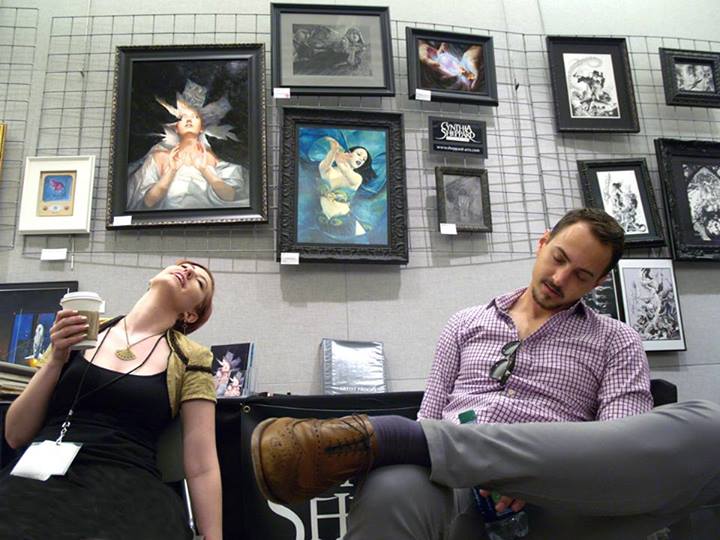 |
| Physical networking can be exhausting. Just ask Cynthia Sheppard and Noah Bradley. |
Whether
you’re an extravert or introvert, virtual networking is easy and
necessary, and physical networking is harder and more expensive. But
it’s also a hell of a lot of fun. Don’t rob yourself of the joy that can only come from con-induced sleep deprivation.
And see you at Spectrum in May?
*You know who you are.


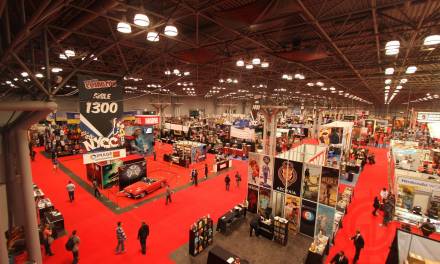
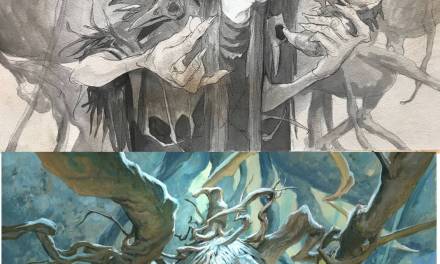
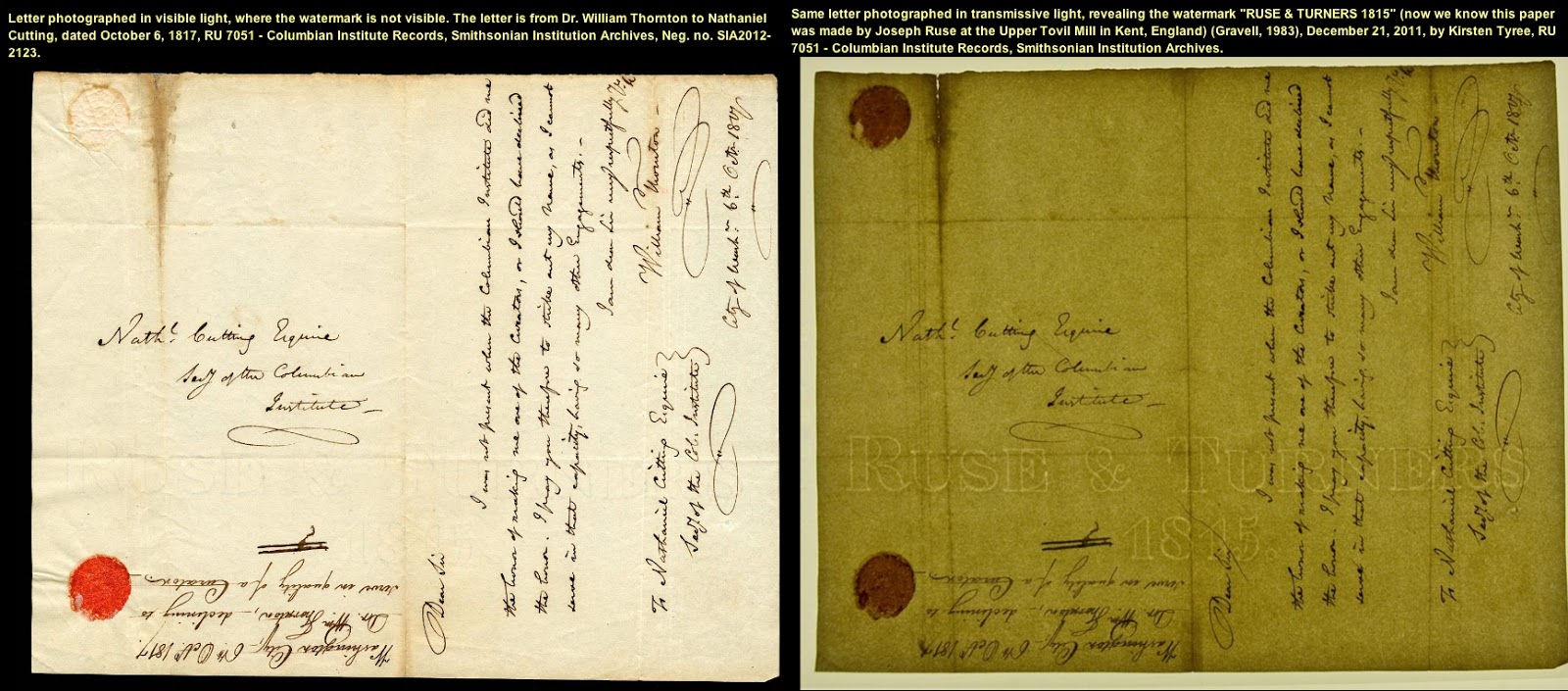
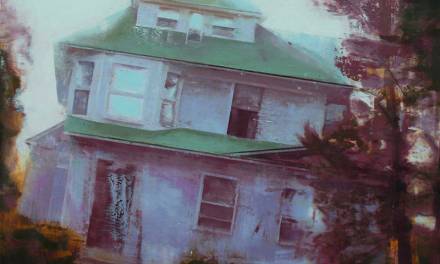

Oh man, I had such a big problem with starting conversations at Spectrum Live. I would start walking toward a person and then just walk by when I realised I didn't have the nerve. Good thing it was three days, so I could make several attempts…
A question, Lauren: In a few of your posts here you've given us examples on opening lines for email or in person encounters with ADs, that go along the lines of “hello, I'm David, I have experince in…”. What if I don't have any professional experience yet? Would it be a better idea to just avoid the subject, or to say something like “I'm David, I'm fresh out of school”?
Ms Panepinto
I find your columns, advice, etc. to be most intelligent, practical, and entertaining. I'm a chemist and do art work as a hobby, but I find your columns contain some of the best motivational ideas around and are well researched… these ideas can work at Spectrum Live or the American Chemical Society. Please continue to post… and keep us smiling before we go to work, or lecture, or grab an occasional paint brush…
I hemmed and hawed about going to Illuxcon but I can say without a single drop of hesitation, it was the best thing I've ever done for my career. No, I didn't get offered The Big Break Job, but networking IN PERSON and seeing the art IN PERSON was worth far more than 100 hours of on-line dallying! Lauren, you gave me awesome advice at my portfolio review and I want to publicly thank you. It's ADs like you that keep us chugging along when the business seems so daunting.
My secret to powering through the awkward? A nice glass of red wine. JUST ONE. But if you drink? It helps takes the edge off. 😀
Paint on, gang!
Oh, absolutely, be honest about your situation. That's a huge relief for ADs actually, because the first few seconds of any conversation is figuring out what the person approaching you wants. I'm thinking in my head “Is this someone who is clearly not ready to work yet wants to know when I can hire them and I'll have to do my diplomatic acrobatics to tell them no truthfully without hurting their feelings?” If you walk up and say “Hey, I'm David. I know I'm not ready for Orbit commissions yet but I'd love some honest feedback and maybe some direction.” that would be like the best and easiest thing ever to respond to.
awesome! thank you. Just trying to keep it all as conversational and common sense as possible. with a healthy dose of humor, of course.
Getting to meet all the artists and art directors was so amazing! During the portfolio reviews, I waited around outside even though I didn't have a scheduled appointment, and Lauren came out with some free time and gave me a time slot! It was so worthwhile!!!
I'm glad you feel that way about coming to Illuxcon. And while I don't want to come out and advocate alcohol….there's a reason so much networking takes place in bars and over drinks. If an alcoholic beverage is not your thing, however, there's never any pressure at these things TO drink, don't worry.
Of course by the time 10pm saturday nite rolled around, I was so exhausted, I actually carried around a glass of neat bourbon and every time someone walked up to me and asked for a portfolio review I said, “I would love to tomorrow, but you don't want me right now.” and held up the glass. effective deterrent. No one wants an AD on truth serum.
This is awesome thanks Lauren. Living in Australia I've found it sometimes difficult to explain to someone why traveling to the other side of the world to attend an illustration convention without any guaranteed monetary outcome (more like a guaranteed debt!) is so important to me as an illustrator. I found it especially difficult to explain it to the US Embassey Consulate Officer when I went for my tourist visa interview (I think he thought I was going to steal work from Americans and overstay my visa!). Oh well 🙂 maybe I'll make it for Spectrum next year!
I'm still in giggle fits over how we were all yelled at like kids in the hotel lobby this year. That was one of my most amazing experiences at IlluXCon being in that one hotel lobby with SO many folks, from AD's to artists and beyond!
It was also a learning experience for me in that I now have a better idea to approach both artists and AD about my work. Your panel with Jon at the con was absolutely amazing and helpful and made me feel so much more confident in approaching either of you both offline and online.
This is such a great post as well. So many of us are introverts (myself included), and it's difficult to know how to approach someone with all the pre-conceived notions we have about our own unworthiness. If IlluXCon has taught me one thing, it is that we are all on the same level as far as our passion and dedication to the arts. We all love it and adore it and want to inspire others! That alone was such a great relief of my own nervousness the longer we stayed at IlluXCon.
I hope to drop a virtual portfolio by you sometime soon, Lauren. It was lovely to meet you in person. Also, loved your skeleton tights!
Hi Lauren,
I try to get involved with networking events when I can but being in the UK, there are fewer of them around. I am a much better digital artist than I am a manual media artist – it just seems to work for me and, when I want to do digital mattes that's fine but, if I want a portfolio review, how is the best way to present this work as they never print well.
Very interesting article by the way. I will be taking on a lot of advice.
Also a nice strategy for meeting people that you haven't met before in a con environment is through other people you've befriended. Lauren was kind enough to introduce me to Jon Schindehette who was right across the table during the portfolio reviews, whom I had never really formally introduced myself to in the past 4 IlluxCons (embarrassing I know). Through that interaction, Jon put a face to the name and I gave him my card and that lead into some more portfolio insight from another AD's perspective, it was an unexpected pleasure. The friend of a friend dynamic works in your favor, it means there are some overlapping qualities that everyone involved appreciate and it's a great icebreaker, which allows you to be yourself, for better or worse.
Another great article
I'm a sucker for puppy-dog-artist eyes….
you hit the nail on the head…leading with enthusiasm and passion pretty much gives you a free pass in this crowd, no matter how awkward your AD pick up lines are.
A lot of people have trouble bending the printer to do their bidding, and honestly, it's almost not worth it. Make sure your website is up to snuff (go back thru my posts and read the “approaching art directors” and “in-person portfolio review” posts) and if you are doing an in-person review, every AD I know now is perfectly happy (if not happier) looking at iPads and other tablets. even a laptop.
Yes, Jon is sooooo scary. Scary like a teddy bear. What's the worst thing he could have done if you introduced yourself? Stare at you funny? Say he was too busy to give a review but he'd take your card? I am teasing, but really, you have to think that way. Social interaction is scary for a lot of people, but it's just the fear of the unknown…the actual risk involved is pretty low. If ADs didn't hire people who made awkward conversation, we'd have no one to hire.
<3
Thanks, Lauren. I was at Illuxcon, and on the first day, I found myself socially seizing up to a degree where i thought about locking myself in my hotel room for the next 5 days. I attempted to buy a drink for a group of top shelf artists at the bar and they politely declined. It was pretty awkward and bad. I did meet and talk to a bunch of other artists trying to break in, and that helped. It's nice to find people in the same boat.
The next day, I went down to the show, and was thinking of heading right back out, but I remembered how nice the people were that I met the day before, and resolved that I would show my portfolio to at just 5 artists in the show. They were all so open and engaged, it totally boosted my confidence. Plus they had so much insight, it was like someone walked in the room and turned on a light switch. The rest of the con was downhill from there. Baby steps really worked for me and I'm super glad I went.
…they're delicious. 🙂
See, I am surprised to hear you say that, I didn't get awkward vibes off you at all.
It's funny, buying drinks is a tough one sometimes, for example it can be sometimes an issue for someone who is slyly not drinking but doesn't want to reveal that because they feel self-conscious. I tripped into that issue with someone once. In my case, I don't really let artists buy me drinks, because I'm very careful about my own morality and taking favors, etc. And sometimes it's just a completely polite turndown because of some other reason you don't know. So i'd say just take it in stride and don't take it personally. it probably wasn't meant to snub you. Usually people will happily let people they don't like spend money on them easier than someone they like or respect.
I love Stewart Craig's artwork! (Ok, everyone else's, too, but I was happily surprised to see his face!)
Stewart Craig rocks!!… helped me load and unload my art from the rental van.
Thanks again Stewart!
JJP
It was an honour!
Thank you very much, Carolina! Hopefully I can get better, especially with all the awesome tips and advice I got from these amazing artists!
I need to get cracking on my portfolio, because these cons actually look…pretty enjoyable? I feel like I should be mildly intimidated by them as an ultra-amateur and a shy introvert. I guess I just like the atmosphere of conventions, haha.
Anyway, I've been really enjoying your posts, Lauren. I feel like you've answered a lot of questions I've had, and proceeded to answer more I never even thought to ask. 🙂
I love reading your post Lauren. You allways make me smile and think “i can do it! i can do it!”. Thinking about the extravert and introvert side of us, i realize that i'm a very shy and introvert girl, but when i went to an italian convention last here i found myself more confident and extravert then i would ever thought. Well it makes me feel home, it makes me understand that that was my place, because i'm not so confident with anything else. Approching editors and AD really scares me -it was my first time ever!- but it was pretty easy and funny! You guys really don't bite! 😀
(sorry if my english is not perfect!)
its BETTER the lower on the ladder you are…just be honest about that, and everyone is thrilled to heap loads of advice and welcoming upon you. and no pressure.
it's true, i think people can be both introvert and extravert, and artists most of all. we need to be introverted to actually get work done and create things, but our batteries go dry if we don't interact with other artists for critiques, inspiration, etc. So i'd say artists definitely swing to the extremes of both.
Oh, very true! I am NOT advocating getting blotto-ed and then trying to be eloquent! Meditate, wear your lucky undies, carry a feather, whatever it takes. Throwing up on an AD's shoes? NOT SO CHARMING.
The “rehearsing opening lines” technique totally works! There were countless times where it helped me get past my initial nervousness at the con. I still let fear get the best of me at times but I'm definitely getting better. Thanks for the post! 🙂
Lauren, I love your posts. Such tangible, accessible, empowering advice – as per your usual.
aw thanks guys! ill keep writing em if you keep reading em
Every thing will be Free, Facebook Likes, Twitter Followers, Twitter Tweets, Twitter Re-Tweets, Twitter Favorites, Google Plus Followers, StumbleUpon Followers, Youtube Views, Youtube Likes, Youtube Subsribes, Pinterest Followers, Pinterest Likes, Pinterest PinIt, Free Website Visitors.
Just Join now and Free Increase your Social Media Networks.
GetLikeFast.com
Thanks for the article. The 10 percent in person is worth the 90 online is revealing. You know I never really have a problem with meeting people but I just never understood the worth of going to a con to get exposure. Comic Con is coming this Saturday to Texas. It sounded like fun and now it sounds like fun work.